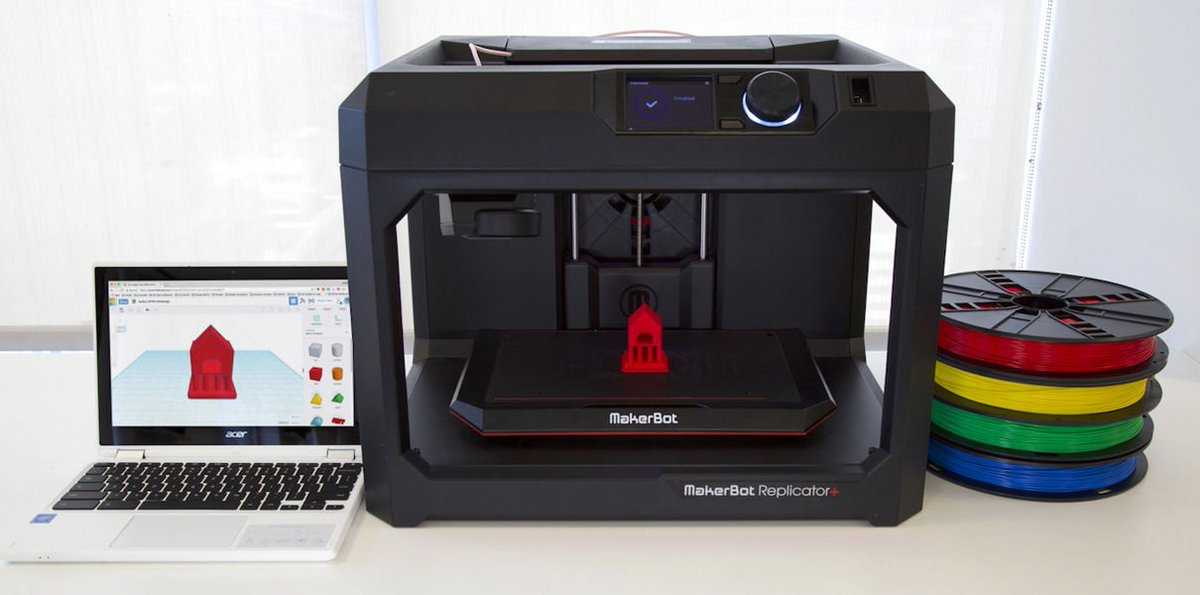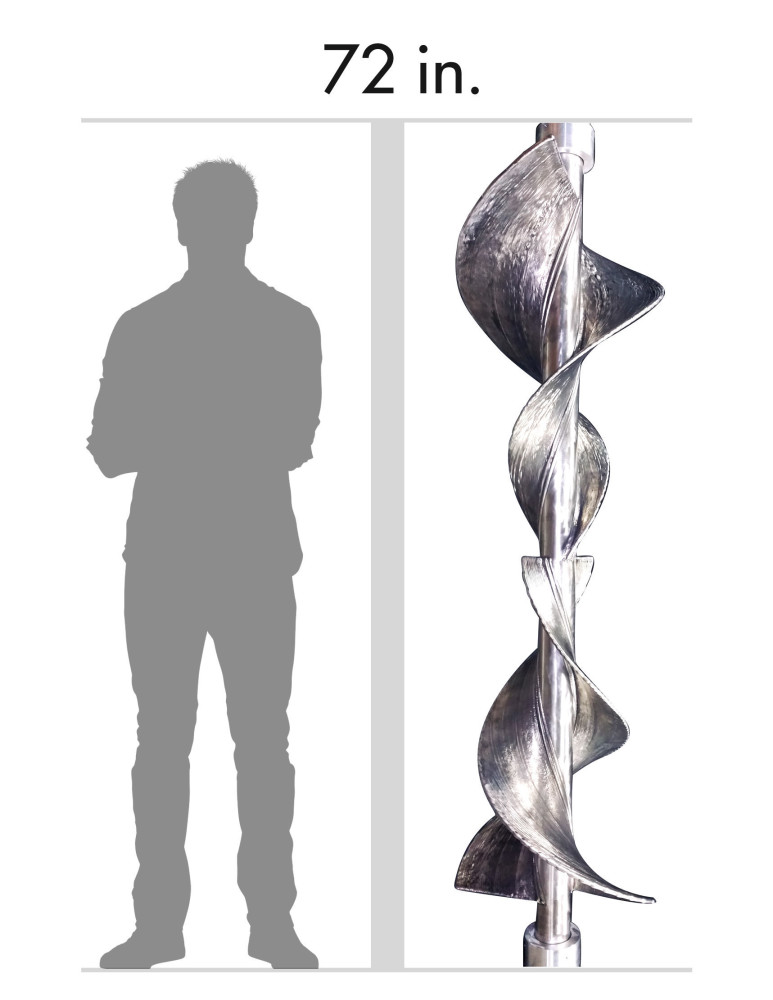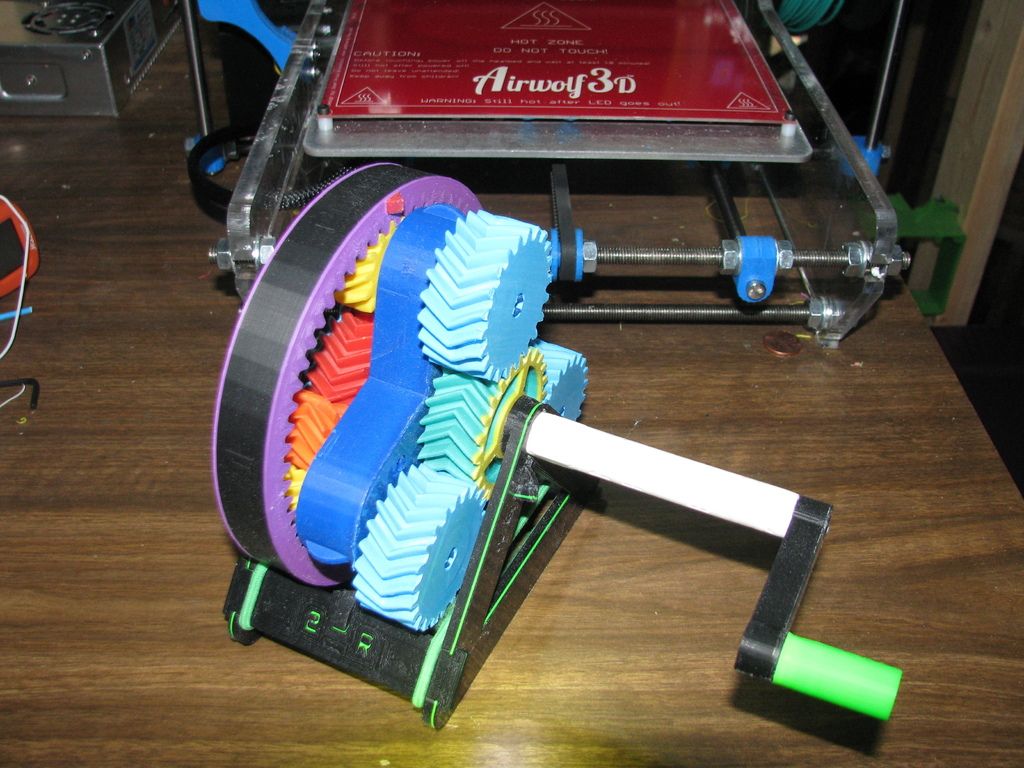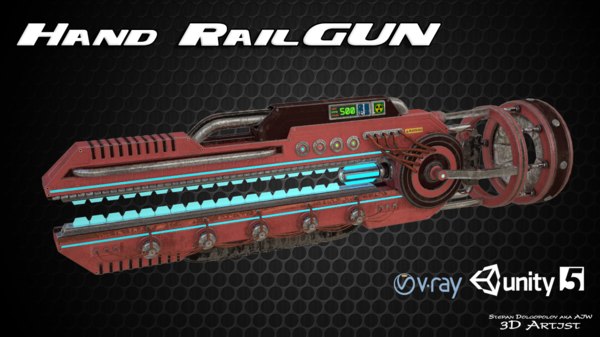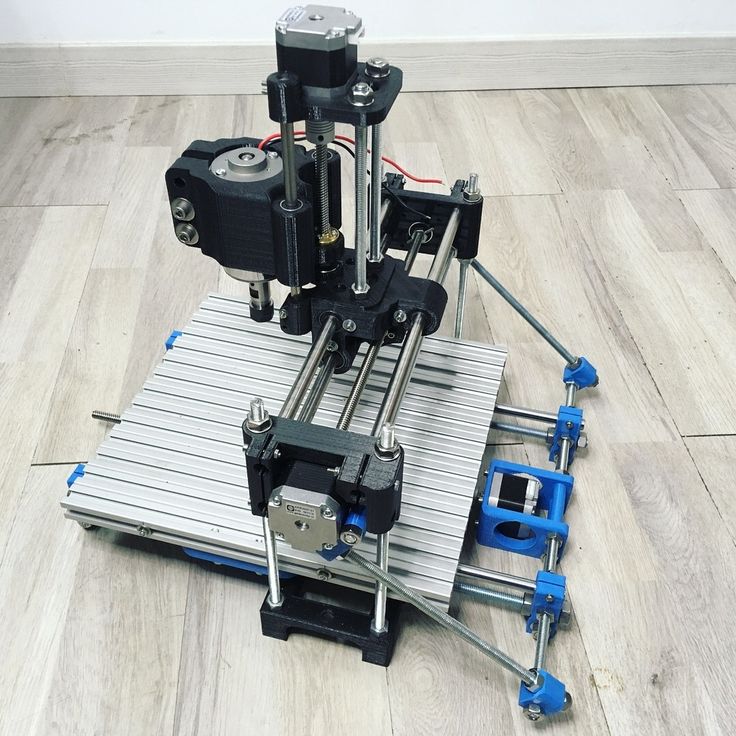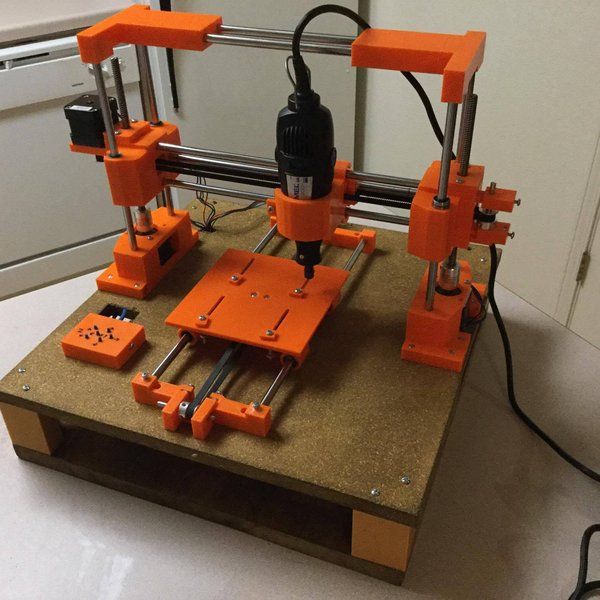3D printer classroom
3D Printers for School and Education
EDUCATING THE NEXT GENERATION OF ENGINEERS
Already in over 7,000 schools - from elementary school to higher education - MakerBot has been a pioneer in helping educators drive innovation in the classroom by building a platform that supports educators and students at every step of the process.
Kindergarten - 8th Grade >
9th Grade - 12th Grade>
Higher Education >
3D
Printing Solutions forEDUCATORSThe leading 3D printers in Education offer the easiest setup experience with no tinkering required.
Get started right away with hundreds of 3D printing lesson plans.
3D Printing Solutions for
Educators
Already in over 7,000 schools - from elementary school to higher education - MakerBot has been a pioneer in helping educators drive innovation in the classroom by building a platform that supports educators and students at every step of the process
Why Educators Choose MakerBot
An Adaptable 3D Printer Platform Any Skill Level
The easiest-to-use 3D printer ecosystem designed to grow with educators and students as they advance from beginner to advanced 3D printing.
Resources for Every Step of the Learning Process
A comprehensive platform that supports you at every step of the process, from ISTE-certified 3D printing training, lesson plans and student project ideas, to new guides, webinars and design challenges.
Ready to Go Workflow Integrations
A seamless workflow ready for any learning or research environment, including our free cloud-based software with no student account creation required and other integrations.
Why Educators Choose MakerBot
The easiest-to-use 3D printer package designed with both educators and students in mind.
Standards-aligned lesson plans and the only comprehensive ISTE-certified 10-hour 3D printing and curriculum creation training included.
A seamless, classroom-ready workflow includes Print from Tinkercad™ and Google Chromebook integrations for easy 3D printing across multiple devices.
Kindergarten - 8th Grade
Bringing 3D printing and the classroom together in early stages of student development.
"I see the tangible project-based outcomes of student learning so vividly after our school purchased MakerBot. The integration of ideas are endless, powerful and FUN!"
8th Grade Science Teacher, Kings Mountain Middle School
High school
Changing how student career pathways are developed.
“The reduction in time and skill needed to create objects increased the students’ learning cycles. they are able to jump right in again and design modifications or go on to new challenges.”
Faridodin “Fredi” Lajvardi, Marine Teacher at Carl Hayden High School
Higher Education
Expanding research development and unlocking new frontiers in research, learning and manufacturing settings.
“I believe that 3D printing is a valuable problem-solving tool and key competency for the future workforce. It was important to integrate this technology into our courses to give students a chance to use equipment that is currently being used within design and manufacturing companies today,”
Prof. Dr. Florian Finsterwalder
Dr. Florian Finsterwalder
MAKERBOT
EDUCATORS GUIDEBOOK
The Definitive Guide to 3D Printing in the Classroom.
MAKERBOT
2022 GRANT GUIDE
Bring 3D printing to your school or classroom by using the MakerBot 2021 Grant Guide.
3D PRINTING
CURRICULUM PLANNING
Developed with Technology and Engineering Educator Liz Gallo, the definitive guide for successful project planning.
Everything You Need to be Successful with 3D Printing in the Classroom
MAKERBOT
EDUCATORS GUIDEBOOK
The Definitive Guide to 3D Printing in the Classroom.
Download Now
MAKERBOT 2022
GRANT GUIDE
Bring 3D printing to your school or classroom by using the MakerBot 2022 Grant Guide.
Download Now
3D PRINTING CURRICULUM PLANNING
We partnered with Technology and Engineering Educator Liz Gallo, the definitive guide for successful project planning.
Download Now
The ideal classroom setup
INCLUDING:
2 Teachers Seats + 10 Students Seats
The ideal classroom setup
8 3D Printers For Schools That Will Surely Blow Your Mind
Have you ever wondered why a 3D printer might be good for a school? Do you think schools that teach STEM can use a 3D printer? If you thought no, then think again!
We are going to tell and after we tell you you'll learn about which 3D printers are best for stem schools.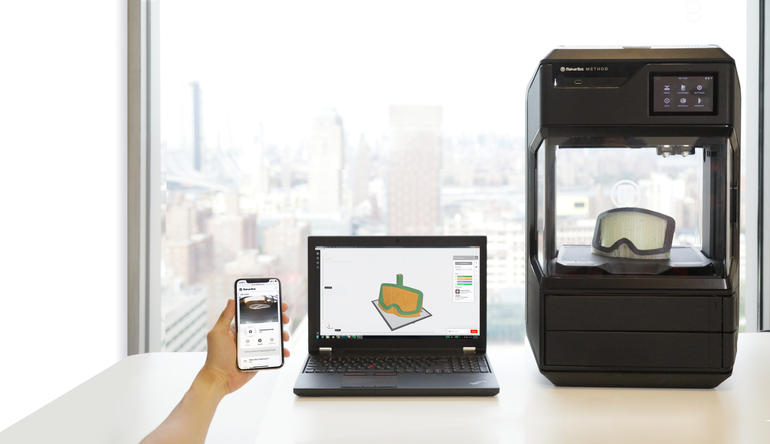 Around the world, more schools are looking for ways to get creative with teaching. Students become bored if teachers don't spice up their teaching style.
Around the world, more schools are looking for ways to get creative with teaching. Students become bored if teachers don't spice up their teaching style.
With technology and access to it on the rise, students become bored much more easily than before. We understand this, so if you're an educator check out our list of best printers for schools that teach STEM. The options on our list are great for keeping students engaged. They also allow educators to work their magic.
Why are 3D printers good for schools?
You can add multiple dimensions of learning with the new technology which has far-reaching benefits. When you add up the positives of a 3D printer it is easy to see why many talented educators, like yourself, are starting to adopt this new technology.
Still, knowing which printer is best to help your students reach their learning outcomes is challenging. Some manufacturers make lesson planning simple by giving you materials to use with their printers. Others have online platforms that inspire you to use the printer in ways you might not have thought about.
Others have online platforms that inspire you to use the printer in ways you might not have thought about.
Then, there are the differences in the printers themselves. What will work best for elementary or high school students? Do the printers offer safe functions for young learners? Perhaps for high school, you can forgo the durable options and choose a printer that offers features instead. Taking this into account, we're here to tell you which printers are a go, and which are a no.
We thought about the costs of setting up a 21st-century classroom because buying many printers at once can cost a lot. We want this to be your definitive guide to preparing your students for their best future. So, we'll also show you how to use your printers to get the most bang for your buck.
What 3D printers do schools use?
Each school is going to be different because they have unique students. However, it' easy to see that all schools will choose a printer that has obvious features like:
- Educational tools
- Heated platforms
- Print area
- 3D printing technology
But, which printer is best for you? Let's get into our list so you can see why you need a 3D printer for teaching STEM.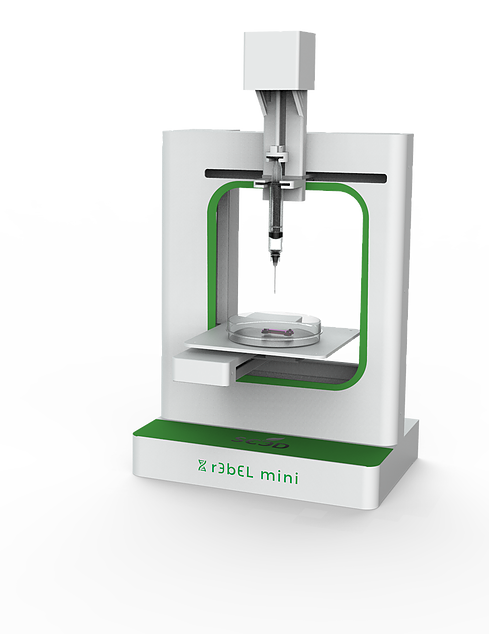
What are the best 3D printers for schools?
Our list is meant to take the hard work out of choosing a printer that will undoubtedly raise student engagement. So, without wasting any more time, here they are.
1. Dremel - 3D40-FLX-01
Shop Now on Amazon
We all know that tangible objects keep students engaged and wanting to work. It doesn't matter if you're teaching college students or youngsters, hands-on activities keep students focused. This 3D printer is a budget-friendly option that won't use up all of your cash. If your school curriculum has a STEM or STEAM component this printer can help you meet learning goals.
The key features of the printer are:- Customer technical knowledge support
- Hot extruder up to 230 degrees
- 3.5-inch touch screen
- Excellent print quality
The build volume of this printer is 10 x 6.0 x 6.7 inches and, yes! You can print hollow objects. You can now take any animated object and turn it into a real-life object. Your students will love printing 3D objects, and as a teacher, you will glow when you see how much they're learning. If you're teaching older students then making anatomic models is a breeze, too!
You can now take any animated object and turn it into a real-life object. Your students will love printing 3D objects, and as a teacher, you will glow when you see how much they're learning. If you're teaching older students then making anatomic models is a breeze, too!
The only downside to this printer is that it is made for people who are just beginning to use the technology. if you're an experienced use - stay tuned. We've got something for you on our list.
2. R QIDI Industrial Printer
Shop Now on Amazon
If you're struggling to teach engineering concepts and find your students are lost in a daze, this printer can solve that for you. Layer by layer, your students will fixate on the powerful tools that 3D technology gives you. The picture shows that printing internal organs is simple - so it will make lessons plans go more smoothly.
The printer for schools is one of the more expensive machines on our list, but for great reasons.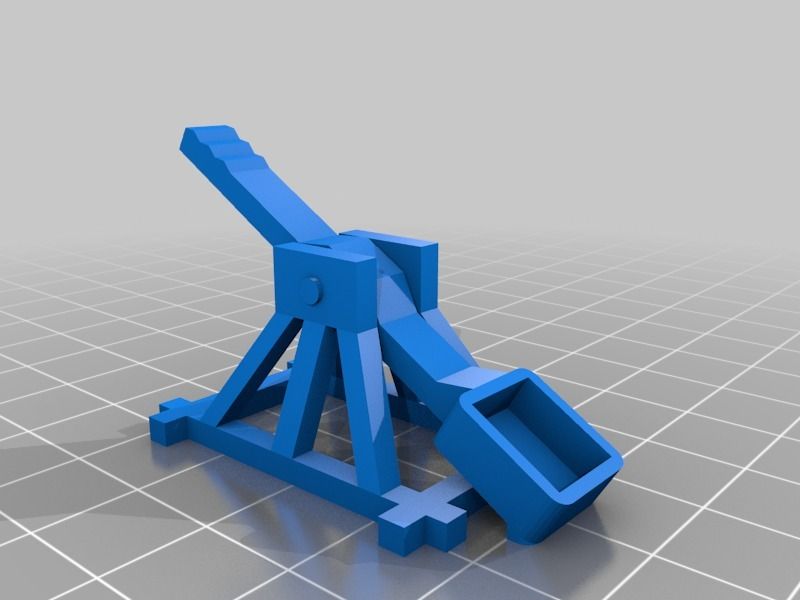
- Prints with all types of filament (PLA, ABS, PETG, TPU)
- Dual extruders
- User-friendly 3D printer
- Heated print bed (250-300 celsius)
Printing high-quality objects have never been easier, and for teachers, time is too valuable. The price range is a bit high, but the company also gives you 1KG of red filament free when you buy this. Lesson plans become faster and you become more efficient when you use this printer. The negative side of this printer is the initial cost.
However, if you can afford it - it's an excellent option for you and your students.
3. Flashforge Adventurer 3C
Shop Now on Amazon
If you need to learn the fundamentals of 3D printing, this might be the printer for you. You can use a variety of filament types and the slide-in build plate makes it very sturdy. This is an excellent choice for teachers who want a simple 3D printing process. It's a printer for beginners, but it will get the job done if you're an experienced user.
It's a printer for beginners, but it will get the job done if you're an experienced user.
- Physical graphic design
- Third-party filaments
- Flexible plate and PEI included
- Detailed review information on amazon
3D printing in schools has benefits and this printer allows you to unleash your potential. Since this is a beginner model, you can find a faster print speed on other models. So, if you're looking for an ultra-fast model this might not be for you. Still, the flexible build plate makes it a perfect option for any teacher who wants to print physical objects to engage students.
Advanced students will love the flexibility of this printer and it makes using the printer focusing for them. Don't wait and grab yours now before they are all gone.
4. QIDI X-one2 Single Extruder 3D Printer
Shop Now on Amazon
This printer is adorable and it is perfect for an elementary STEM classroom. The printer would also be ideal for curriculum creating training for a stem setting because you can print dinosaurs! Technology and engineering teachers, you won't want to miss out on this printer. The setup process is simple and makes an excellent setup experience.
The printer would also be ideal for curriculum creating training for a stem setting because you can print dinosaurs! Technology and engineering teachers, you won't want to miss out on this printer. The setup process is simple and makes an excellent setup experience.
The SD card included comes with powerful software, but not just any software. The company gives you 3D modeling software so you can see what you will print before you waste your filament. Watch your students' 3D designs come to life as they build 3D models of buildings, cars, and toys for STEM projects. There's a wide range of possibilities with this printer.
Why should you buy it?- Heated build plate
- Manual print bed leveling
- 1/2 inch print layer height
The only drawback that might make this printer a no-go is the lack of an LCD screen. However, since it is a budget-friendly 3d printer it's a great choice for schools. Don't worry about expensive printers for the classroom, this one gives you all the bang you need for being a cheap printer.
5. Dremel Digilab 3D20
Shop Now on Amazon
If you want to be the cool teacher but you're worried about 3D printing technology - Dremel has a solution. They offer an online community of tech support leaders to help you understand this machine. The cloud-based slicing software offered by Dremmel is top-notch, so what you're getting is going to be good. This printer, unlike others on our list, is great for an advanced user.
The software and tech support mean this is the easiest-to-use 3D printer package for teachers who need some help.
What makes it worth the money?- LCD Display
- Customer Support included
- Printing material is non-toxic, recyclable, and plant-based PLA filament
- Fast speed for high print volume
The ease of setup and use make this an excellent option for teachers who need support. However, one downfall is that the printer does not have automatic bed leveling.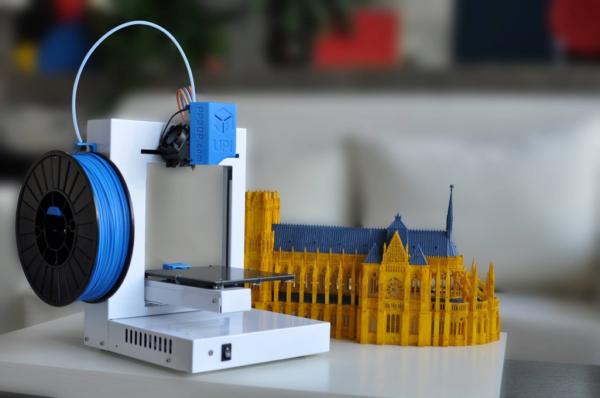 You need to manually level the bed using the software provided to you.
You need to manually level the bed using the software provided to you.
6. Official Creality Ender Printer
Shop Now on Amazon
Do you work in an area prone to power outages? This printer has a lapse function that can pause your print job and resume it when you get power back. It would be a great option for people who need a printer that can heat up quickly. The kit comes semi-assembled, so it is perfect for teachers who need more time.
Why should you buy this?- Great for kids
- High precision printing
- Ideal for STEM projects
The printer is quick and has a large bed so you can create most sized projects easily. Current printers have a range of heating up speeds and ease of use technology, but this one wins and makes it a perfect choice for any educator.
The downfall to this printer is that it is not enclosed, but kids would love to see this printer in action. So, is it really a negative aspect? If you want your students engaged, grab one of these because they are selling fast!
7.
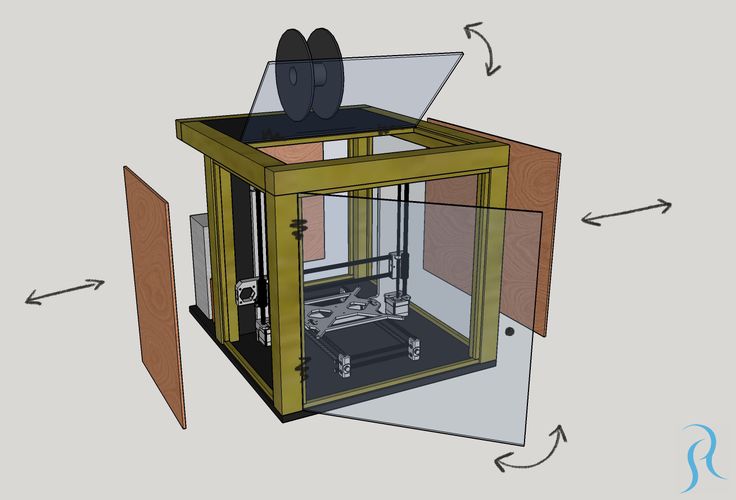 ANYCUBIC Photon Mono X
ANYCUBIC Photon Mono X Shop Now on Amazon
Hey STEM teachers, you can't get better than this printer! It is the perfect classroom 3D printer. The cover keeps small fingers far from danger, and it is easy to set up and use. If you buy this printer your students will love to watch it print the different layers as you make whatever you need.
What is great about this printer?- High speed
- Resin Printer
- ANYCUBIC Photon workshop software included
- Aluminum platform
This printer is a bit bigger than others on our list, so if you have a small classroom this might not be the ideal printer for you. If you have the space, it's an easy choice because this one is packed with functionality.
8. Artillery Sidewinder
Shop Now on Amazon
Hey STEM teachers, you can't get better than this printer! It is the perfect classroom 3D printer. The cover keeps small fingers far from danger, and it is easy to set up and use. If you buy this printer your students will love to watch it print the different layers as you make whatever you need.
If you buy this printer your students will love to watch it print the different layers as you make whatever you need.
- High speed
- Resin Printer
- ANYCUBIC Photon workshop software included
- Aluminum platform
This printer is a bit bigger than others on our list, so if you have a small classroom this might not be the ideal printer for you. If you have the space, it's an easy choice because this one is packed with functionality.
STEM Lessons for your printer
Now that we have seen the best printers for an educational setting, you might be wondering how you can use them. The possibilities are endless with a 3d printer and we are going to show you how to increase engagement with some lesson plans.
Make a simple machineThe first lesson plan is essential for the current pandemic. You can also teach your students the mechanics of simple machines. For this lesson, you will make a hands-free sanitizer dispenser. A 3D model will help your students to plan and better understand the engineering design process. Here you can see that a 3D printer is a powerful learning tool.
For this lesson, you will make a hands-free sanitizer dispenser. A 3D model will help your students to plan and better understand the engineering design process. Here you can see that a 3D printer is a powerful learning tool.
Every school year we struggle to find ways to engage our students. This project has a range of applications for the STEM classroom and to help you create 21st-century learners. You will guide your students to build a quadcopter that they can fly. You can help them understand the engineering design process.
Once you complete the model you can see how far up it can fly. If the first try is not successful use the opportunity to teach your students the importance of never giving up.
Teach students how to make a water diverterThis is a great project for those classrooms that have thirsty students and a sink. Using the printer you will design a water diverter. When you block off the flow of water you can create an easy way to get a drink. Teach your students about water flow and how water moves. If their diverter doesn't work well the first time create a shorter diverter.
When you block off the flow of water you can create an easy way to get a drink. Teach your students about water flow and how water moves. If their diverter doesn't work well the first time create a shorter diverter.
If the diverter still doesn't work you can talk about low water pressure and see if your students can modify the diverter to make enough pressure to get a drink. The possibilities are endless for this project.
Make a measurement frameAre you a teacher who dreads math? You won't dread it when you have a 3D printer. You can easily show students how to make a modular frame and teach them many aspects of math. Using a printed modular frame you can teach your students:
- Measurements
- Area
- Surface Area
- Perimeter
Or, you can also teach them how to make a modular city and throw in some social studies learning. We recommend having your students make a board game they can play. That is a sure way to keep them learning while having fun!
Build a computerYour kids are going to love this project.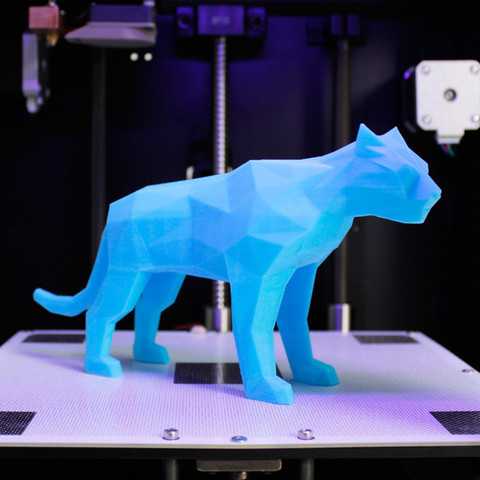 You need to buy a raspberry pi to make it fully functional, but it will allow you to add an element of computer engineering for a wider range of applications. You will use the printer to make a personal computer.
You need to buy a raspberry pi to make it fully functional, but it will allow you to add an element of computer engineering for a wider range of applications. You will use the printer to make a personal computer.
Mobile devices consume our life daily. So, this is the perfect project for keeping your students engaged and giving them real-world application.
Should you get a 3D printer?
Of course! If you are still doubting whether or not to get a 3D printer, look back at all the amazing things you can do with one. In case you've forgotten here are the best things you can do with this new technology:
- Raise student engagement
- Increase student productivity
- Become the star teacher
- Teach students valuable life skills
As educators, our main goal is always to keep students engaged and wanting to learn. With 3D printing technology, we don't have to try to keep our students learning. We know that when students have fun, they learn more. When students learn more, they feel successful. Success as a teacher makes us happy.
When students learn more, they feel successful. Success as a teacher makes us happy.
Having seen everything that a printer can do for STEM education, you should be convinced to buy one. We recommend any printer on this list because we know they work. Teachers have tried them and loved them, and told us their experiences. So, start your school year off by prepping your students to be creative and productive learners.
Buy a 3D printer and unleash all the potential that your students have. You will boost their creativity, teach them about collaboration (a crucial skill), and because of collaborating they will learn how to communicate clearly and effectively.
What are you waiting for? Grab one of these printers before they are all gone. Many of them have excellent deals at the moment, so the moment is right for buying. We hope you enjoyed our list of printers. We know you can see the value in these products as the smart teacher you are. Have a great start to the school year and keep the momentum until June!
50 Cool Things to 3D Print / Sudo Null IT News
No ideas for 3D printing? Tired of worthless trinkets? Here is a list of 50 cool really useful things for 3D printing.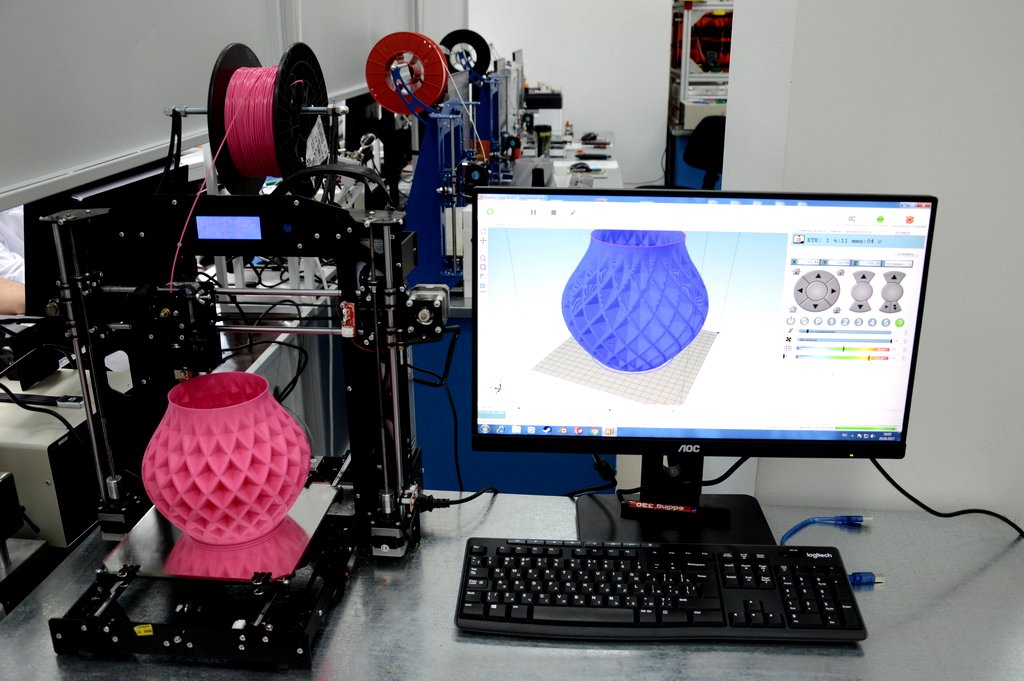
Like us, you're excited about the possibilities of 3D printing. But, unfortunately, the horizon is littered with trinkets, trinkets and other unnecessary things. We are in danger of being buried under a heap of useless rubbish.
Throw off the shackles of mediocrity! Let's create really useful things! Here is a list of cool things that you can make on a 3D printer right now. Prove to your family and loved ones that this wonderful technology can be used daily and in practice.
No access to 3D printer? No problem. Just upload your files to our 3D printing price comparison system and choose the best price, ONLINE!
Don't have a 3D printer to print these amazing things? Then come to
Download from ThingiVerse
3D Printing Cool Thing #2: Power Outlet Shelf
Attach a shelf to your power outlet to support your phone while charging. The shelf has a slanted recess that allows you to keep your smartphone or tablet upright.
Download from ThingiVerse
3D Printing Cool Item #3: Soap Dish
Elegant bathroom soap dish with two washable compartments. You can change the pattern of the inner pallet if you wish.
Download from ThingiVerse
3D Printable Cool Item #4: Nightstand Tag Handles
The art of storage doesn't have to be boring. The Hobb Knob is a small pen with a label to describe the items in the drawers. Now you will never lose your socks!
Download from ThingiVerse
Cool 3D printable item #5: coasters with geometric patterns
When it comes to hot drinks, mug circles are an inevitable risk. Things take a much more serious turn if there is a coffee-addicted inhabitant in the house. Available in three designs, these coasters help you avoid unsightly stains.
Things take a much more serious turn if there is a coffee-addicted inhabitant in the house. Available in three designs, these coasters help you avoid unsightly stains.
Download from Pinshape
3D Printing Cool Thing #6: Hinge Lamp
This hinged modular lamp consists of 6 main parts: base, body and top with LEDs. To make the lamp taller, you can add the required number of elements.
Download from MyMiniFactory
3D Printable Cool Item #7: one-handed bottle opener
This boomerang-shaped bottle opener is useful for people who have difficulty performing activities that require the application of force, for example, when opening a plastic bottle. Print it out and give it to your grandmother. She will appreciate this gesture.
Download from ThingiVerse
Cool thing for 3D printing #8: shower head
Is swimming under a waterfall on your list of things to do before you die? The next best thing is a 3D printed shower head (probably).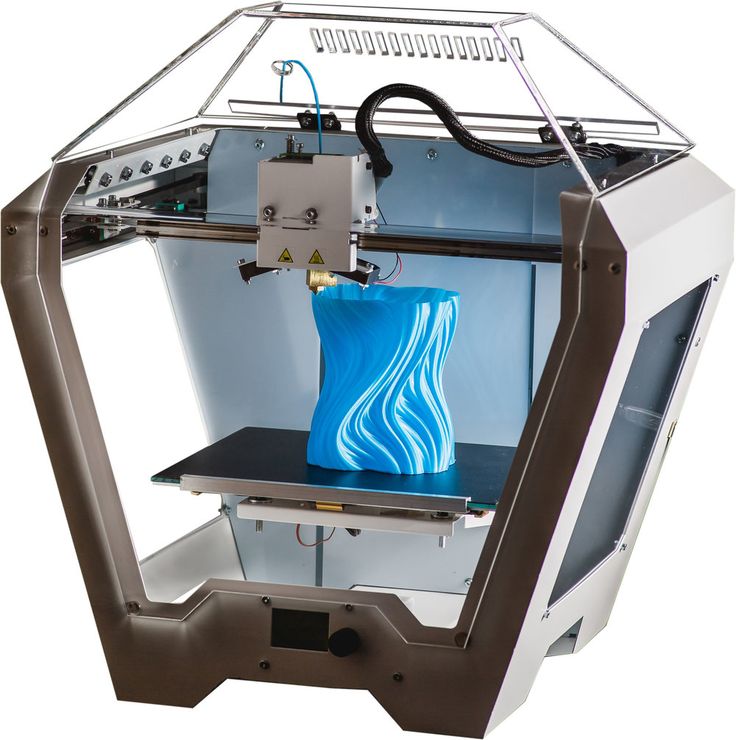
Download from ThingiVerse
3D Printing Cool Item #9: Secret Shelf
Hide valuable documents and stash from prying eyes on this secret shelf.
Download from ThingiVerse
Cool thing for 3D printing #10: jar handle
Enhance empty jam jars with a printed handle. What could be easier?
Download from ThingiVerse
3D Printing Cool Thing #11: Plastic Wrench
A full size general purpose plastic wrench. Actually for screwing and unscrewing around the house.
Download from ThingiVerse
Cool thing for 3D printing #12: business card holder
"What a delicate yellowish hue, and the thickness is tasteful, oh my god, even the watermarks." Do you have such a business card? Find her a pair in the form of this business card holder, printed in its entirety (yes, already with a hinged lid). Instructions for adding a custom logo are included.
Download from ThingiVerse
3D Printable Cool Item #13: Alien Invader Shaped Toilet Paper Holder
Brighten up your bathroom with this functional printable model of a classic alien invader... ahem holding your toilet paper.
Download from ThingiVerse
3D Printing Cool Thing #14: lift platform
Here is a fully assembled lift platform. Printed in full. No need to fiddle with a bunch of details. The adjustable height can be used to lift or support an object of acceptable weight.
Download from ThingiVerse
3D Printing Cool Thing #15: Plant Drinker
Houseplants fallen victim to neglect? FORGET ABOUT IT. Print out this simple automatic plant drinker and your conscience will be clear.
Download from ThingiVerse
3D Printing Cool Item #16: earbud holder
We spend a lot of money buying headphones on the go, but we don't protect them enough when we use them.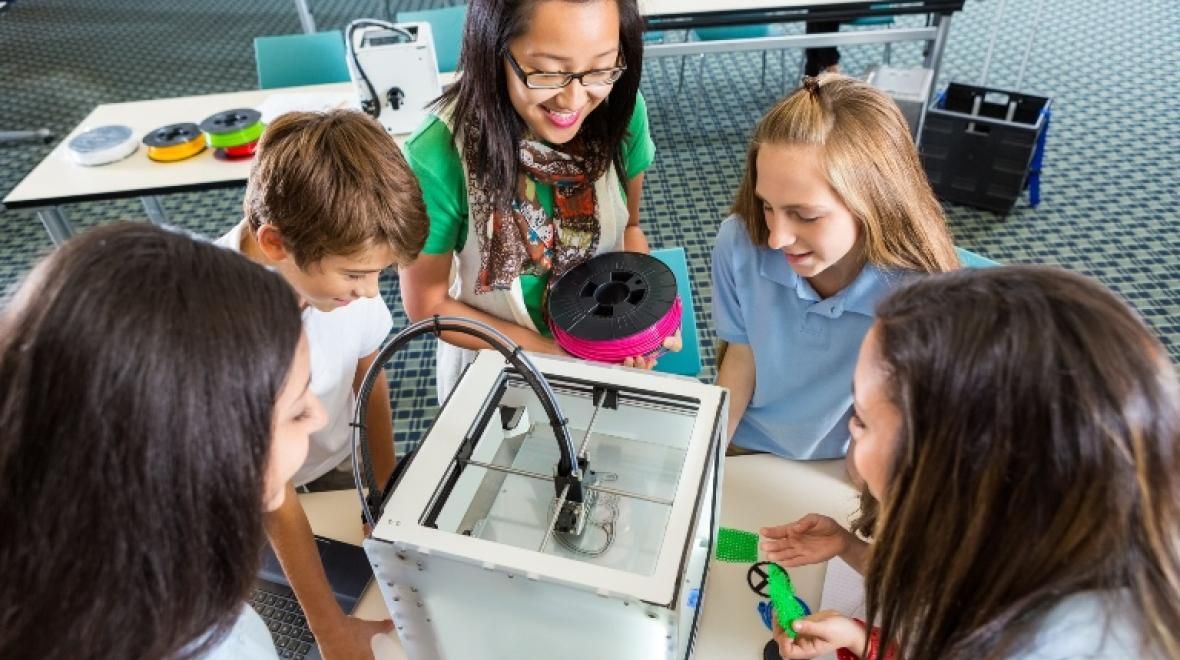 Hide your headphones safely in this 3D printed holder.
Hide your headphones safely in this 3D printed holder.
Download from ThingiVerse
3D Printing Cool Thing #17: Package Pen
We all know this situation. You trudge home from the supermarket, loaded with bags of groceries. The force of gravity causes plastic to crash into your palms, am I right? ENOUGH. Print these bag handles and forget about chafed palms forever!
Download from ThingiVerse
Cool thing for 3D printing #18: tablet stand
There are times when you need to free your hands when using your smart device, such as watching TV shows or cooking recipes. This simple stand supports 7" and larger tablets in both portrait and landscape modes.
Download from Pinshape
Cool 3D Printing Item #19: Plant Drinker #2
Another horticultural art contraption. It is especially suitable for kitchen plants. The next time you buy fresh herbs for cooking, transplant them into this neat device and they'll stay fresh all week long.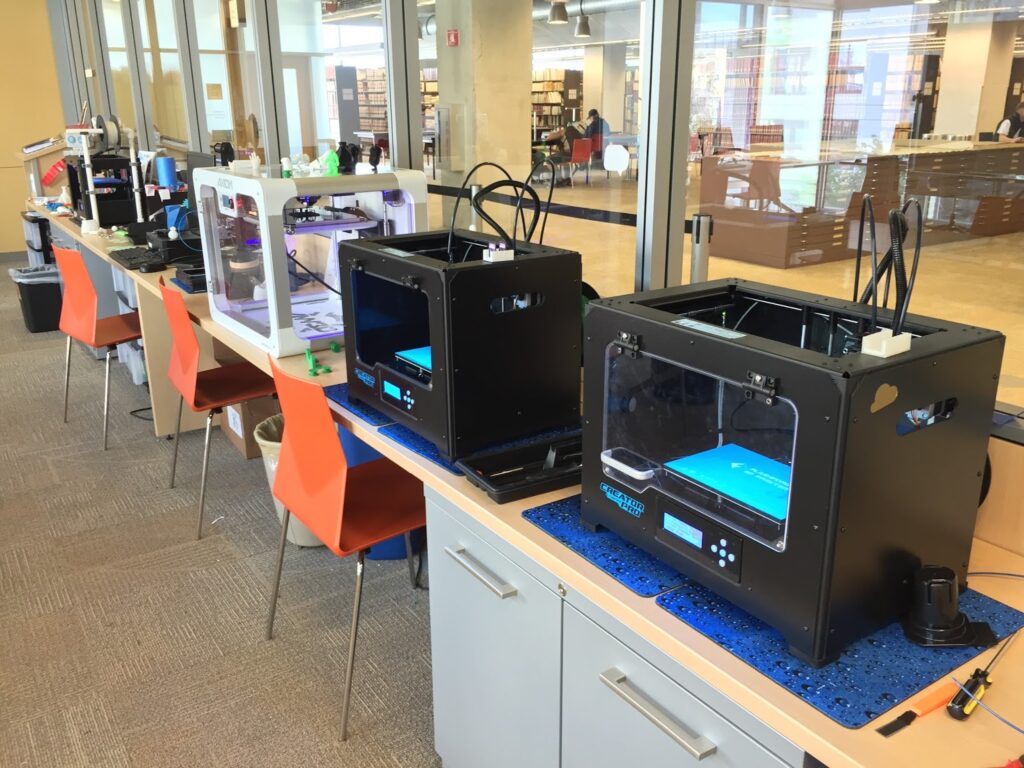
Download from ThingiVerse
Cool thing for 3D printing #20: door stop
Tired of everyone slamming doors at home or in the office? Then you need an UNCOMPROMISING door stop. Light weight, child safe, designed for easy installation and easy fabrication on an FDM 3D printer. The creator of the stop also claims that the device can be used to repel zombie attacks, however this version has not been verified.
Download from ThingiVerse
3D Printing Cool Item #21: Windshield Scraper
If you want to quickly and easily get rid of snow and ice on your car windshield with this handy scraper. Printed without support, at the end there is a hole for a lace.
Download from ThingiVerse
3D Printing Cool Thing #22: Water Hose Control
This special nozzle regulates the flow of water in the garden hose, about 2 liters per minute. It’s great if you have water limits set in the height of summer.
Download from ThingiVerse
3D Printing Cool Item #23: Modular Wine Rack
Whether you're new or a connoisseur in the world of wine, this modular wine rack is the perfect storage solution for your fine drink. bottles of WIRA. It can be expanded (or narrowed) according to your collection by printing only the required number of modules.
Download from 3DShook
Cool thing for 3D printing #24: whistle for protection
This original design whistle is easy to make and carry. Durable and very loud. How loud? How about 118 decibels? This is more than enough to get people to hear about your emergency.
Download from ThingiVerse
3D Printable Cool Thing #25: Apple Headphone Holder
Download from ThingiVerse9
3D Printable Thing: Cool Thing #20016 Holder of an umbrella for a wheelchair
Download with Myminifactory
Cool thing for 3D Press No.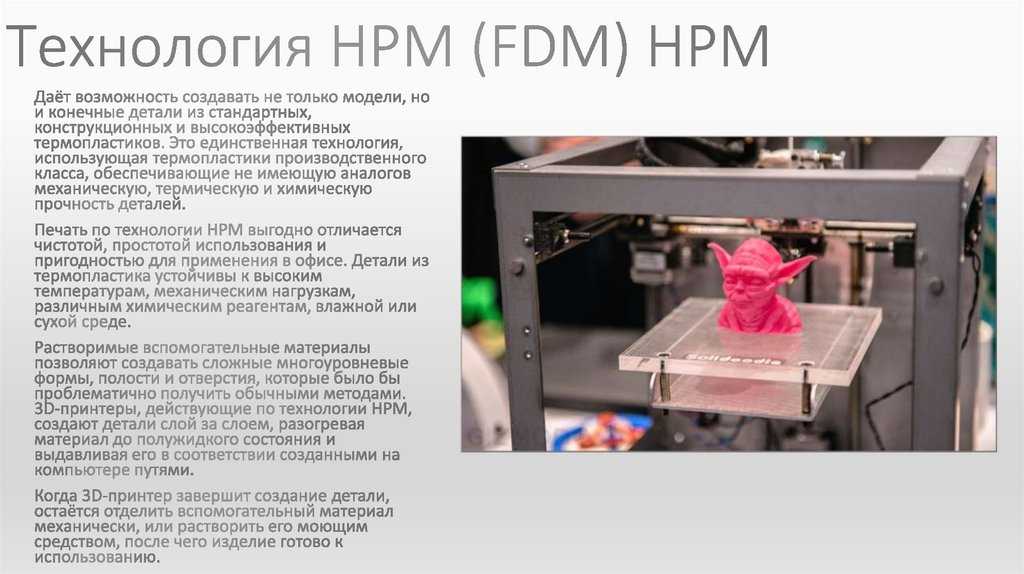 28: Protection for disk
28: Protection for disk
Download from Myminifactory
Cool thing for 3D Press No. 29: Form for Snow.
Download from ThingiVerse
Cool 3D Printable Item #30: Wine Bottle Protector
Download from MyMiniFactory170004
Cool thing for 3D printing No. 31: Pocket ashtray
download from Myminifactory
Cool Press No. 32: Rod holder
3D Printable Cool Item #33: Apple Remote Stand
Download from MyMiniFactory
3D Printable Cool Item #34: Key Holder
Download with Myminifactory
Cool thing for 3D printing No. 35: Holder of cutlery for people with disabilities
download from Myminifactory
Current Press No. Cover wine bottle
Download from MyMiniFactory
Cool thing for 3D printing #37: Paper cup holder
download from Myminifactory
Cool thing for 3D printing No.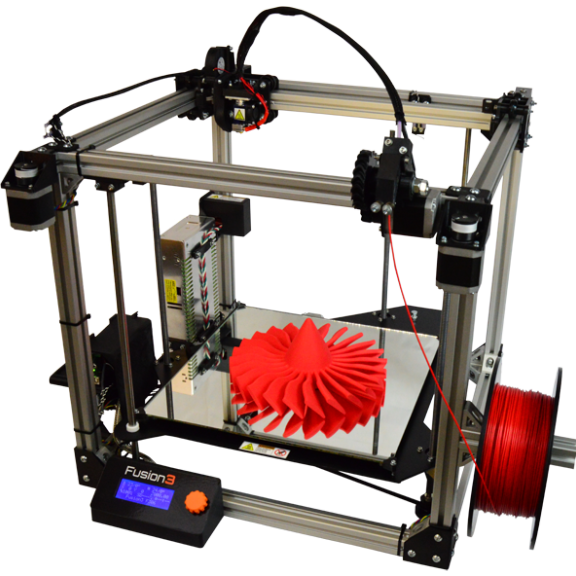 38: Case for blades
38: Case for blades
download from Myminifactory
Cool thing for 3D printing No. 39: Holder for children from MyMiniFactory
3D Printable Cool Item #40: Towel Rack
Download from MyMiniFactory
3D Printable Cool Item #41: Holder for a glass
Download with Myminifactory
Cool thing for 3D Press No. 42: Holder for a phone in the shower
Download from Myminifactory 9000
Twisting thing for 3D printing No. 43: Holder No. 43: Holder for beer glasses
Download from MyMiniFactory
Cool thing for 3D printing #44: MacBook Pro stand
download from Myminifactory
Cool thing for 3D printing No. 45: Protection for SD-Cart
download from Myminifactory
Cool thing No. 46: Bathrrics 0
Download from MyMiniFactory
3D Printable Cool Item #47: Ice Cream Cone Holder
Download from MyMiniFactory
Printable Cool Item #40016 shower set
download from Myminifactory
Cool Semit for 3D Press No. 49: Evacal separator
49: Evacal separator
Download with Myminifactory
Cool Press No. 50:
Download from MyMiniFactory
Want more exciting news from the world of 3D technology?
Follow us on social. facebook networks:
3D printers in construction: prospects for application
At first glance, 3D printing structures seem to be some kind of shell of a half-finished building. But upon closer examination, you will not find even a brick. Layers of material seem to build up one on top of the other - this is how a complex structure is created. It's a futuristic world of 3D printing where robotic arms automatically layer and compress layers of concrete or plastic or any other material into a foundation and build a structure.
This method of construction is quite niche today - only a few prototypes of 3D houses and offices have been printed in the world. However, this technology represents an exciting and potentially powerful solution to building change.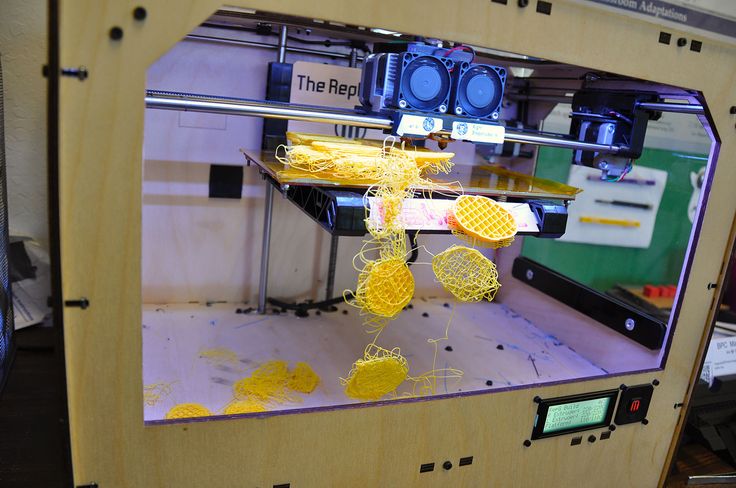
What is 3D printing in construction, what is the potential, and will we be working on 3D printed projects in the near future?
- What is 3d printing in construction?
- 3D printers in construction: how is it done?
- 5 examples of innovation
- How can 3d printed projects help construction companies?
- 3D printing distribution
- Civil engineering 3D printing
- Wiki House technology - an open source project for 3D printing: what is behind the concept
- Reverse side of the coin
- How 3D printing can be integrated into construction
- About PlanRadar
3D printing in construction - what kind of technology?
3D printing for construction uses both a 3D printer, which has a robotic "crane-arm" that builds structures right on the construction site, and the creation of certain elements by printers at the factory, which are already assembled into a structure on site.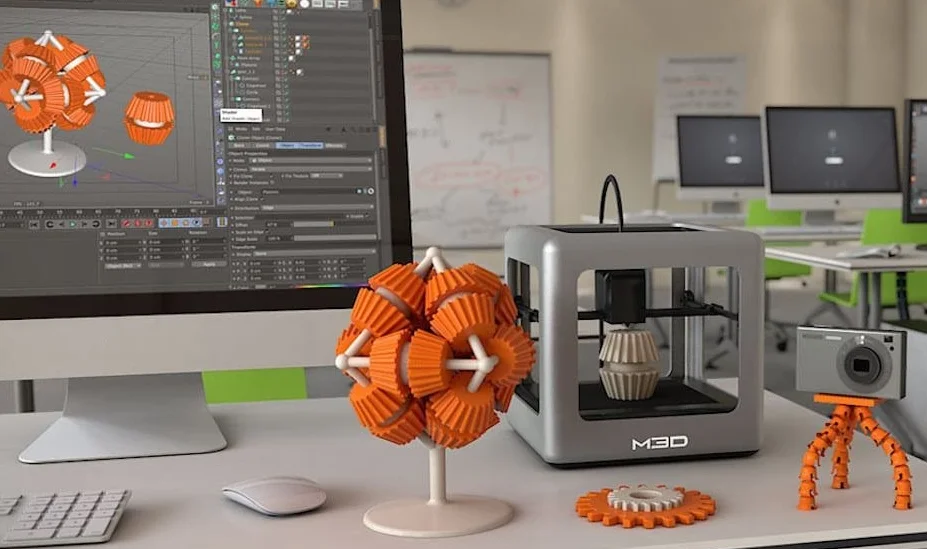
The concept of 3D printing is not new: it first appeared in the 80s. But it's only in the last decade that this technology has been improved enough (and the cost significantly reduced) to become a real mainstream.
3D printers are not much different from conventional inkjet office printers. The software tells the printer about the dimensions of the final product. And then the printer starts to output the material to the platform according to the plan. 3D printers often use liquid metals, plastics, cement, and variations of various materials that, when cooled and dried, form a structure.
In a building 3D printer, the CAD or BIM programs tell the device what to print, and the machine starts layering the material according to the design plan.
3D printers in construction: how do they work?
3D printing concept - the printer extrudes a certain liquid mixture in layers, level by level, creating a design based on a three-dimensional model. The prepared mix of concrete, filler, plasticizer and other components is loaded into the hopper of the device and fed to the print head. The mixture is applied to the surface of the site or to the previous printed layers. This is how most 3D printers work. Among them, there are three types of devices for 3D printing:
The mixture is applied to the surface of the site or to the previous printed layers. This is how most 3D printers work. Among them, there are three types of devices for 3D printing:
Robotic printer
Read also: New technologies in construction 2021
5 innovative examples of 3D printing
To date, only a few 3D printing projects have been implemented in the construction industry. Here are five of the most impressive and promising projects:
Dubai City Hall Office Building, UAE
1. Dubai City Hall Office Building, UAE
3D printed building. The office block built in the UAE is 9,5 meter high building with an area of 640 m2.
An Apis Cor 3D printer moved around an open-air construction site with a crane and erected different parts of the structure.
2. Office of the Future, UAE
Office of the Future, UAE
Another impressive 3D printed building in the UAE, the Office of the Future is a unique, fairly large structure that currently houses a temporary headquarters organization Dubai Future Foundation.
For this building, the elements were not created on site and were printed in 17 days, while the building itself was assembled in 48 hours.
3. WinSun 3D Printer Houses, China
WinSun 3D Printer Houses, China
WinSun 3D Printing Company of China has also applied factory-built 3D printers to build residential buildings. The company has created several house projects, including a small multi-storey building. All construction details can be printed quickly and cheaply and then quickly assembled on the construction site.
The company has calculated that it could cost as little as $161,000 to build and print their five-story building.
4. Lewis Grand Hotel, Philippines 3D printed number
Lewis Grand Hotel, Philippines 3D printed number
When planning a trip to the Philippines, consider staying at the Lewis Grand Hotel in Angeles City , Pampanga, where visitors will be greeted with the world's first 3D printed hotel suite. The hotel room was designed by Lewis Jakich, hotel owner and materials engineer, in collaboration with 3D printing specialist Anthony Rudenko. They created a massive 3D printer that prints sand and concrete based on volcanic ash. The room was printed in 100 hours.
The hotel room was designed by Lewis Jakich, hotel owner and materials engineer, in collaboration with 3D printing specialist Anthony Rudenko. They created a massive 3D printer that prints sand and concrete based on volcanic ash. The room was printed in 100 hours.
5. Two-story mansion in Beckum, Germany
Two-story mansion in Beckum, Germany
The first 3D-printed residential building with an area of about 80 square meters - the brainchild of the German construction company PERI GmbH and the architectural design bureau MENSE-KORTE ingenieure + architecture. A BOD2 3D printer was used to print one square meter of double wall cladding in 5 minutes. The building is a structure with three-layer hollow walls filled with insulating mass. Installation of hollow pipes and connections during printing was carried out manually.
3D printing in construction seems really impressive, but what are the real benefits of such technology?
How can 3D printed designs be useful for construction companies?
Proponents of 3D printing houses and commercial offices point to several advantages of this construction method:
- Zero waste construction
In the UK, almost a third of the waste comes from the construction industry. According to the Transparency Market Research Group, the construction industry worldwide will produce 2.2 billion tons of construction waste by 2025. And although most of the waste is related to the demolition of buildings, the construction sites themselves produce a lot of waste.
According to the Transparency Market Research Group, the construction industry worldwide will produce 2.2 billion tons of construction waste by 2025. And although most of the waste is related to the demolition of buildings, the construction sites themselves produce a lot of waste.
Conversely, 3D printing can reduce waste to almost zero. A 3D printer uses a well-defined amount of material that is required to print a design - no more, no less. This can be a big savings.
- Reduced energy consumption
3D printing in construction encourages the use of locally available materials and natural ingredients. This practice can reduce energy costs in transportation, construction and manufacturing, as most local materials require less energy to process or install. If traditional materials with toxic chemical impurities are replaced with natural ones, then the toxicity of the entire construction can be reduced. In addition, local materials are often better suited to local climates and can reduce a building's heating or cooling load, which also reduces construction costs.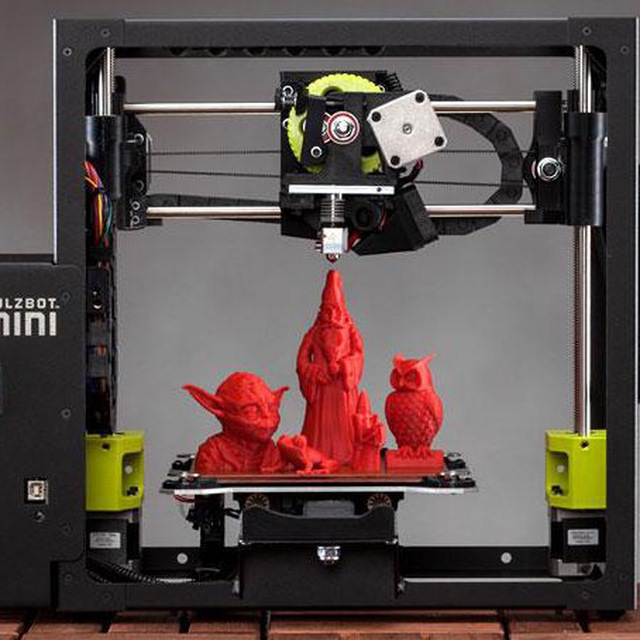
- Save time and money
As with AI in construction, a 3D printer can run 24 hours a day, 7 days a week. This means construction projects have the potential to be completed much faster and a number of low-skilled labor costs can be avoided. What's more, 3D printing eliminates the need for temporary structures, such as formwork and scaffolding, that are commonly used in traditional construction. Studies of 3D printed concrete structures have shown a significant reduction in formwork requirements, reducing costs by 35-60%.
- Can realize unusual design shapes
One of the most attractive characteristics of 3D printers is their ability to create complex and unusual design designs, including a single, unique one. Since the job of a 3D printer is to layer the material, they can be programmed into absolutely any unusual shape that would be much more difficult to create with traditional techniques.
- Minimize human error and improve safety
The published injury statistics at the workplace by the American agency BLS in 2020 indicates that construction is one of the most traumatic areas and a high incidence of diseases. Every day, about 5333 workers die on the construction site. And with the advent of 3D printing, the number of work injuries and fatalities will obviously decrease, as it makes construction more programmable and automated. Robotic construction requires standardized, accurate and complete digital building information, making this technology more accurate and efficient, with minimal rework due to human error or any information inconsistencies. The usual problems with materials and components that need to be stored somewhere, protected from damage are leveled out, problems with installation and work in progress due to damage also disappear - 3D elements are created as they are built, they do not need to be moved and stored.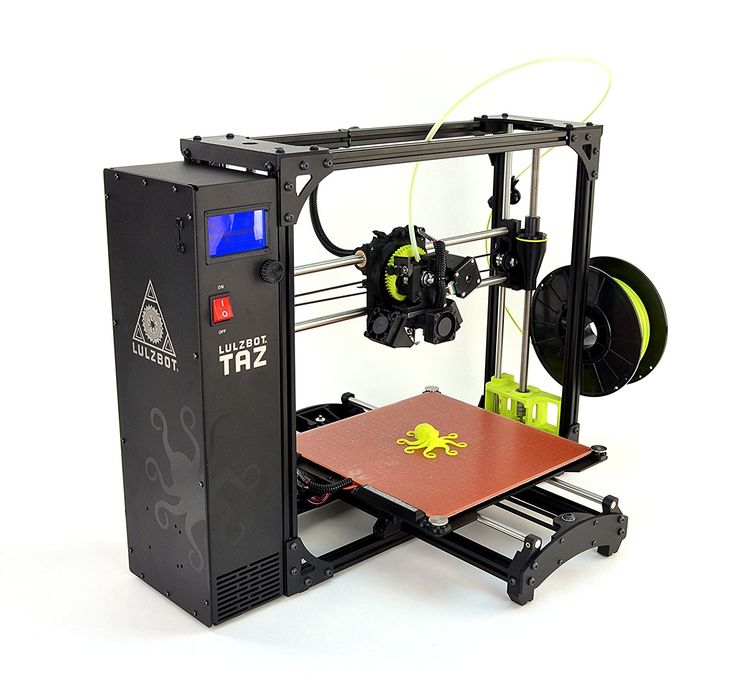
- Exploring new markets
The use of a 3D printer also allows construction companies to enter new market sectors that were previously inaccessible to them. And for start-up companies, having a 3D printer will be a competitive advantage. What's more, 3D printing is a brilliant way to elevate or improve the reputation of a construction company's brand among those who believe that concrete production has an impact on the planet's environment.
Distribution of structural 3D printing
3D printing for structural reinforcement, small scale components and structural steel could revolutionize design, construction and space exploration. In addition, the European Space Agency (ESA) believes that using 3D printed metals to create high-quality complex shapes can significantly reduce their cost, and they will become very common.
ESA has developed a project with the European Commission to improve the printing of metal components that can be used in space. In total, 28 European partners have united for the joint project AMAZE (Additive Manufacturing Aiming Towards Zero - layer-by-layer 3D printing for zero waste from production and efficient production of high-tech metal products).
In total, 28 European partners have united for the joint project AMAZE (Additive Manufacturing Aiming Towards Zero - layer-by-layer 3D printing for zero waste from production and efficient production of high-tech metal products).
Almost everything can be designed on a computer, so AMAZE plans to install a 3D printer on board the spacecraft, and as soon as an astronaut needs any part, a tool, he can simply print it.
Structural 3D printing
Civil engineering 3D printing
Civil engineering 3D printing has been gaining popularity over the past decade, as has the aerospace and biomedical industries. This revolutionary manufacturing technique is based on its unique ability to create any geometric shape without any formal restrictions, minimizing waste but increasing productivity and results. The construction industry's push towards automation has recently reached important milestones, including the creation of the first structures using robotic "arms" and 3D printing technology.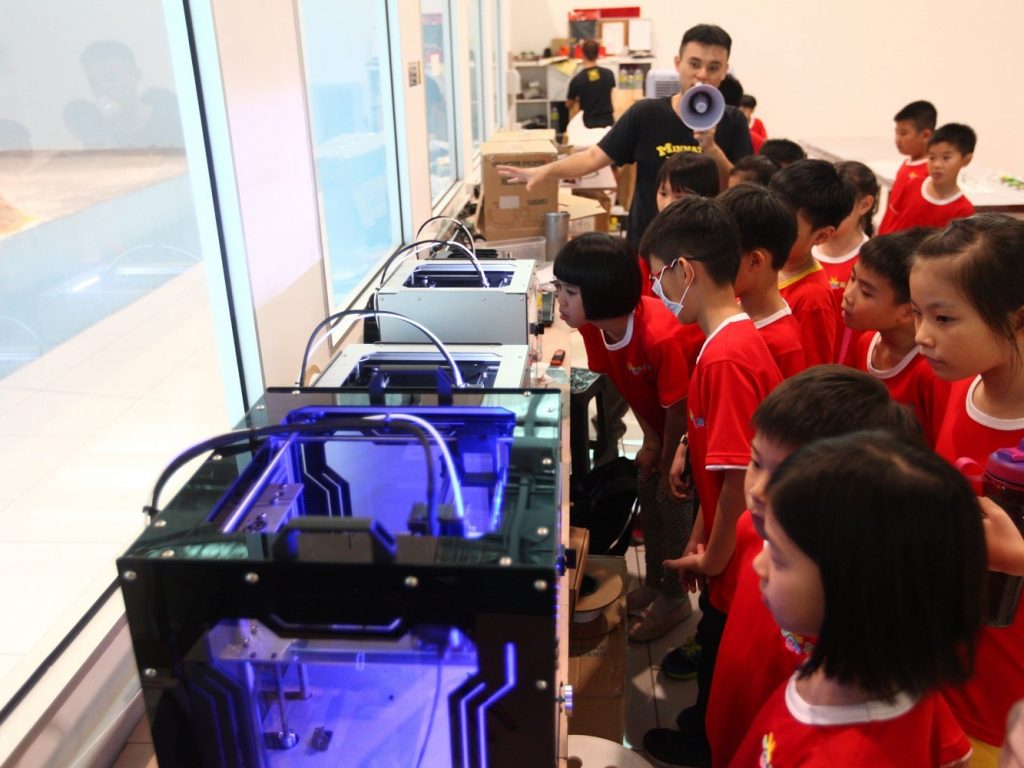
The use of 3D printing in the creation of structural elements from polymer materials, concrete and metals is becoming more common.
These civil engineering technicians can create free-form and innovative architectural designs using CAD-integrated software.
However, despite considerable research in the aerospace and bioengineering industries to evaluate and analyze this mechanism, there is still a lack of understanding of its use, the impact of 3D printed materials in civil structures, both in terms of material properties and structural response.
Imperial College London
Read also: Best Building Apps in 2021
WIKI HOUSE - 3D printing in construction: what is the concept behind
Wiki House is an innovative project created by a small group of architects in London in 2011 . It offers an open source digital house design system that allows users to create, upload and share designs and print their own houses.
The kit does not require any special knowledge and training and can be created in 1 day. Elements are digitally cut from ordinary sheet material, like plywood, using a CNC machine. And it's much faster, less costly, and doesn't require the involvement of experts, as in conventional traditional construction.
Elements are digitally cut from ordinary sheet material, like plywood, using a CNC machine. And it's much faster, less costly, and doesn't require the involvement of experts, as in conventional traditional construction.
A standard two bedroom house can be built for less than £50,000 and additional components such as cladding, insulation, windows and more can be added to the main frame of the structure. The first house that was built on the basis of the open source Wiki House technology was a two-story building. The 3D printed house was presented at the London Design Festival in 2014.
The Wiki House movement was spearheaded by Alastair Parvin, whose TED presentation "Architecture for People, Built by People" talked about the promise of 3D printing in construction. The creator of this project believes that Wiki House can help solve the housing problem, especially in emergency situations such as earthquakes (there is already evidence that 3D-printed houses can withstand shocks up to magnitude 8).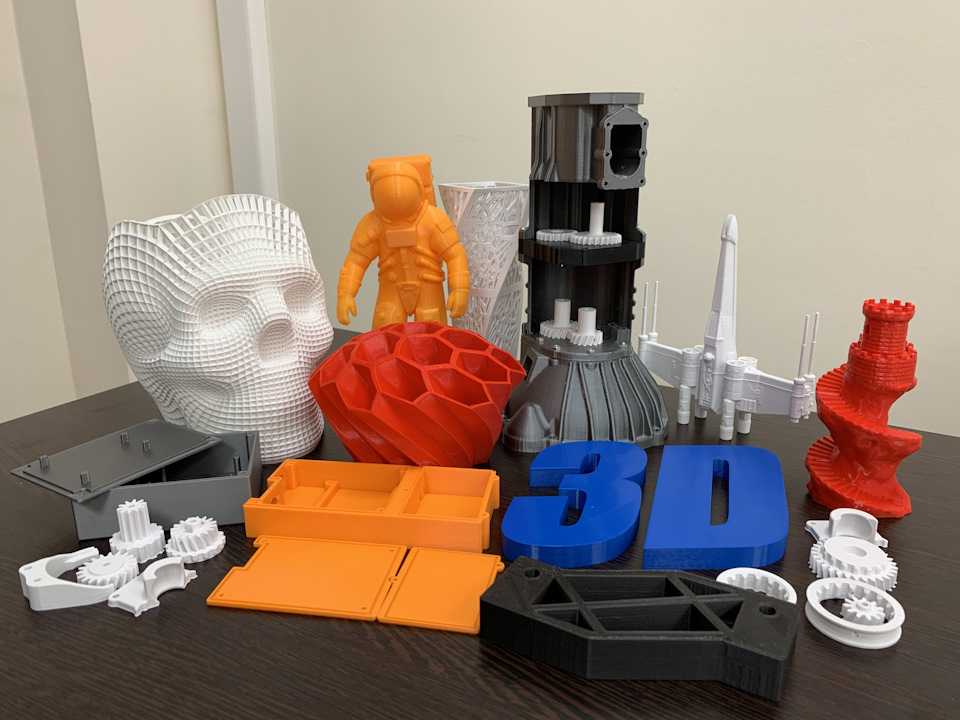
In the future, this could become a real alternative to low-cost houses, while allowing the customer to control the design of the project.
3D building built using Wiki House
Will 3D printing be the sustainable future of building?
3D printing has the potential to revolutionize the supply chain and structure through a new method of design and manufacturing. According to the study, 3D printing can help the construction industry become more economical, more efficient and greener.
Saxon University of Applied Sciences scientists Ivo Kotman and Neils Faber claim that 3D printing technology will be a "game changer". They explored the possibilities of 3D printing concrete, and their conclusions are:
- 3D printing shortens the supply chain and the overall design process. 3D printing right on the job site eliminates time-consuming steps in the design process. The architects, engineers, contractors, clients, and executives who normally have to be actively involved in a project are no longer needed in 3D printing.
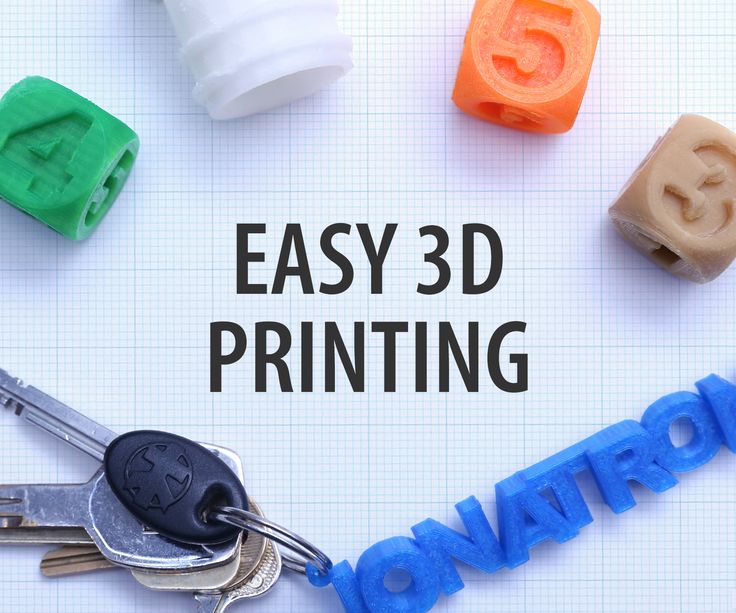 Since all tasks can be combined in one figure of the architect, who uses the modeling method and reproduces the exact holistic designs.
Since all tasks can be combined in one figure of the architect, who uses the modeling method and reproduces the exact holistic designs. - Pipe fitting and electrical wiring become easier and more efficient. Heating systems, insulation, plumbing and electricity all require the laborious on-site installation of conventional construction. However, in 3D printing, some of these features can be incorporated into the 3D printing process. Cavity wall printing is less resource intensive, improves insulation, and allows the use of 3D-printed hot or cold water channels. Moreover, the need for on-site installation is eliminated, which directly affects the reduction of waste.
- The best logistics. 3D printing eliminates 3 logistics and shipping issues. Firstly, a lot of materials and elements often deteriorate upon delivery, and if everything is printed on site, then damage is minimized
Secondly, in order to withstand transportation, the parts must be with increased technical characteristics, which by default increases the cost of them, and therefore the entire project. 3D printing right on the construction site will help to avoid such additional costs.
3D printing right on the construction site will help to avoid such additional costs.
- Creation of individual house designs available to the general market. Usually, building a house with the involvement of an architect is an expensive pleasure for most consumers. But with concrete 3D printing, you don't have to worry about the chosen shape, it won't cost more. In fact, this means that in the future more people will be able to buy houses of their own design according to their individual needs
Reverse side of the coin
While 3D printing is definitely attractive, it's still important to look at it impartially, removing some of the promotional stimulus. Skeptics note several disadvantages of this technology.
Skeptics note several disadvantages of this technology.
- Research and development costs
Most construction companies operate with relatively low profitability. To start using 3D printing everywhere, significant investments will be required.
- Will consumers see this as a marketing ploy?
3D printed houses, offices, shops and other infrastructure are often impressive. But do most people really want to live or work in one? For most people, brick houses are much more familiar and attractive. Other technologies such as prefabricated houses also seemed like an attractive technology of the future for some time, but have not been widely adopted, despite the fact that in many cases they were cheaper than traditional ones.
- Difficulty integrating with other components
3D printers can create unique and interesting designs. However, if you need a building that will use different materials or different elements that will not be suitable for 3D printing, then it will be a challenge to include a 3D printer for the building process.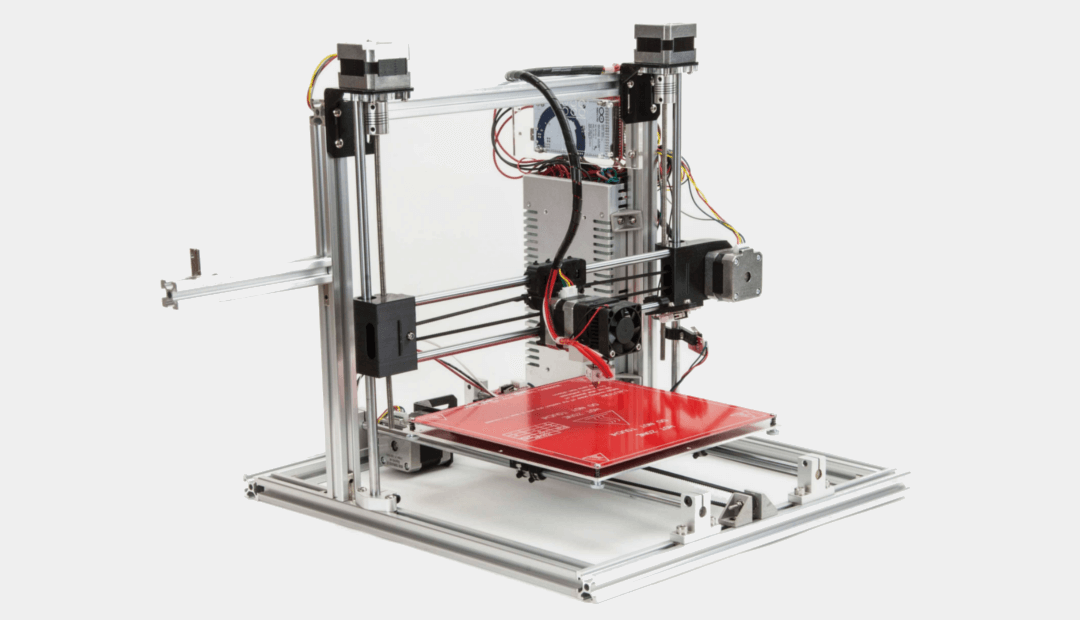
- Lack of skilled labor
With the current problem of a shortage of skilled labor in the construction sector in general, 3D printing will require an even larger set of specialized knowledge and skills, which will have to be selected from an already small niche of candidates. So finding specialists to work in 3D printing for construction may be another difficult task in the future.
- Construction quality control
Weather conditions can slow down the traditional building process, but things are even worse for 3D printing. The environmental factor for commercial construction may reduce the demand for 3D printing. What's more, quality control can be a much more serious task, requiring constant monitoring of the process by real people at the construction site.
- No standards and regulations
Despite the regular mention of 3D printing in the media, it still has not had a significant impact on the construction sector.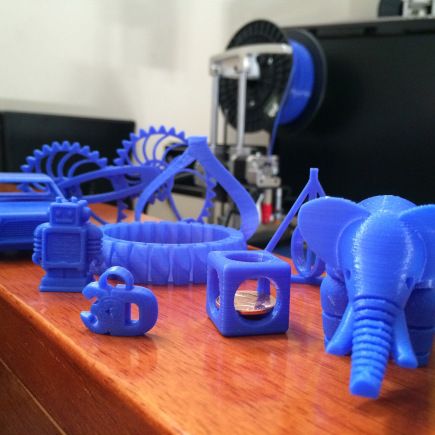 There is an obvious liability issue when using these printers, even more so than human liability when doing some construction work. And quite a few other ambiguities regarding this technology. So until norms and standards are established, as well as rules in this area, 3D printing is unlikely to become mainstream in the construction industry.
There is an obvious liability issue when using these printers, even more so than human liability when doing some construction work. And quite a few other ambiguities regarding this technology. So until norms and standards are established, as well as rules in this area, 3D printing is unlikely to become mainstream in the construction industry.
Read also: New technologies in construction 2021
How can 3D printing be integrated with construction?
At the moment there is strong evidence that 3D printing is worthy of attention and can be applied in the construction segment, and most likely that this technology will be used more in the coming years. True, it is not known how widely these devices will be used on the construction site, or whether they will remain only a tool for the manufacture of block elements for prefabricated structures. But for certain projects, it is reasonable to assume that 3D printers and this technology in construction will be a must-have tool in the arsenal of builders.